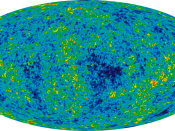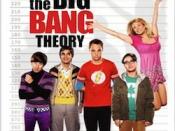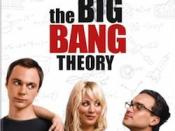Big Bang
It is always a mystery about how the universe began, whether if and when it will end.
Astronomers construct hypotheses called cosmological models that try to find the answer.
There are two types of models: Big Bang and Steady State. However, through many
observational evidences, the Big Bang theory can best explain the creation of the
universe.
The Big Bang model postulates that about 15 to 20 billion years ago, the universe
violently exploded into being, in an event called the Big Bang. Before the Big Bang, all
of the matter and radiation of our present universe were packed together in the primeval
fireball -- an extremely hot dense state from which the universe rapidly expanded. The
Big Bang was the start of time and space. The matter and radiation of that early stage
rapidly expanded and cooled. Several million years later, it condensed into galaxies. The
universe has continued to expand, and the galaxies have continued moving away from
each other ever since.
Today the universe is still expanding, as astronomers have
observed.
The Steady State model says that the universe does not evolve or change in time. There
was no beginning in the past, nor will there be change in the future. This model assumes
the perfect cosmological principle. This principle says that the universe is the same
everywhere on the large scale, at all times. It maintains the same average density of
matter forever.
There are observational evidences found that can prove the Big Bang model is more
reasonable than the Steady State model. First, the redshifts of distant galaxies. Redshift
is a Doppler effect which states that if a galaxy is moving away, the spectral line of that
galaxy observed will have a shift to the red end. The faster the galaxy moves,



More definition on steady state
i was looking for some more info on the steady state model... .you explained only a little bit about it i believe
0 out of 0 people found this comment useful.